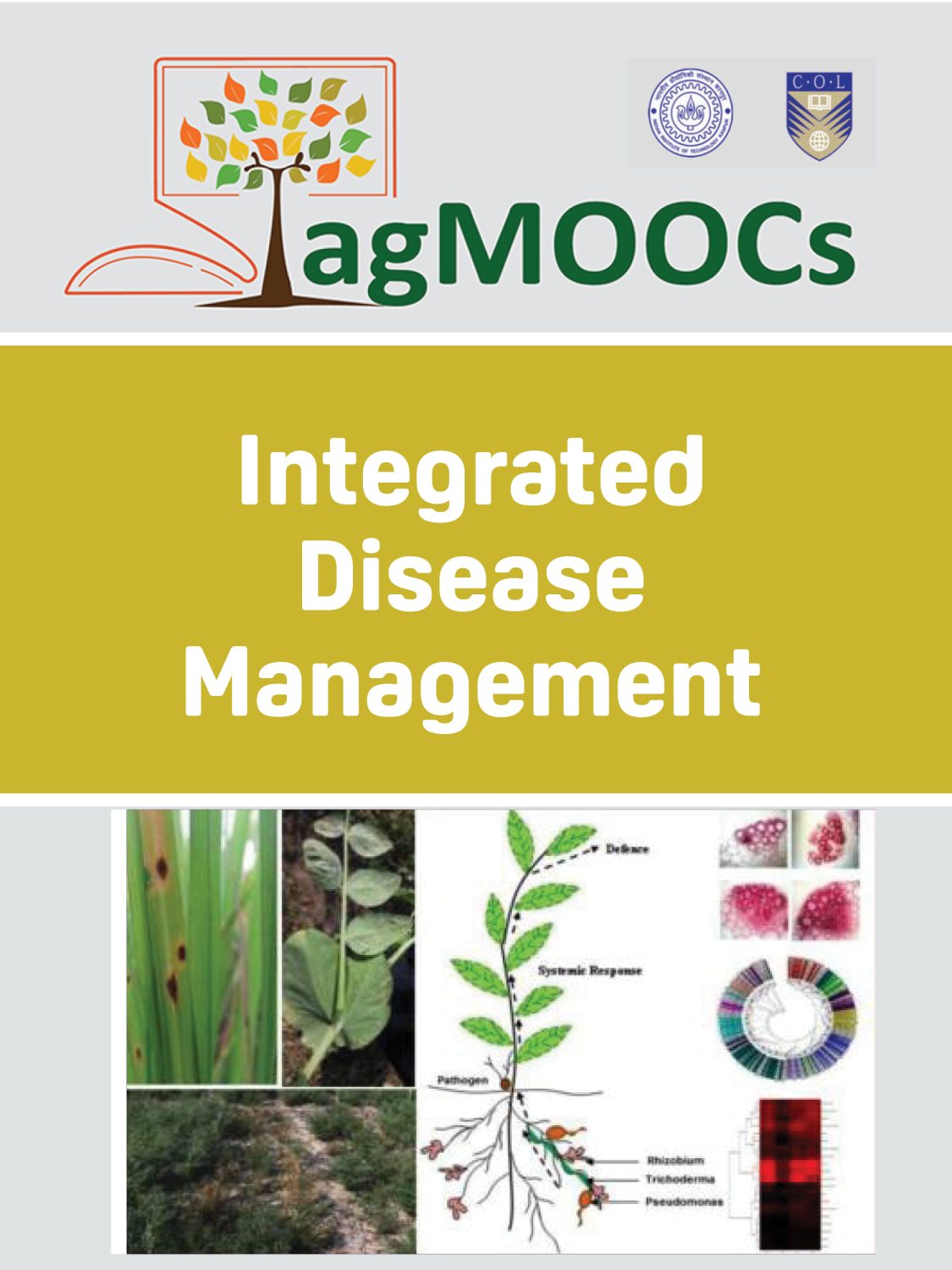Integrated Disease Management

The IDM course is designed to give a clear picture of plant pathogens; processes of disease development; management of some important cereals, pulses, fruits, vegetables and oilseed diseases; and approaches of plant disease management utilizing genomics and biotechnological tools.
Contents
Book Information
Book Description
Billion dollars of crop loss is caused by plant diseases worldwide each year. No single disease management strategy is applicable to all plant pathogens. Factors like modern agricultural practices and climate change helped in evolution of new pathogen races. Farmers depend heavily on synthetic pesticides to manage plant diseases. Indiscriminate use of such chemicals has harmed all life forms. Integrated disease management (IDM) strategies advocate managing plant diseases with minimal use of synthetic pesticides. However, IDM strategies are based on understanding the pathogen etiology, diversity and evolution. Genomics of plant pathogens contributed to understanding of pathogen diversity and evolution. Additionally, biotechnological tools supported management of pathogens against whom resistant source is not available in cultivated species. Therefore, the IDM course is designed to give a clear picture of plant pathogens; processes of disease development; management of some important cereals, pulses, fruits, vegetables and oilseed diseases; and approaches of plant disease management utilizing genomics and biotechnological tools.
Licence
Integrated Disease Management Copyright © 2023 by Commonwealth of Learning (COL) is licensed under a Creative Commons Attribution-ShareAlike 4.0 International License, except where otherwise noted.
Subject
Agricultural and rural economics

